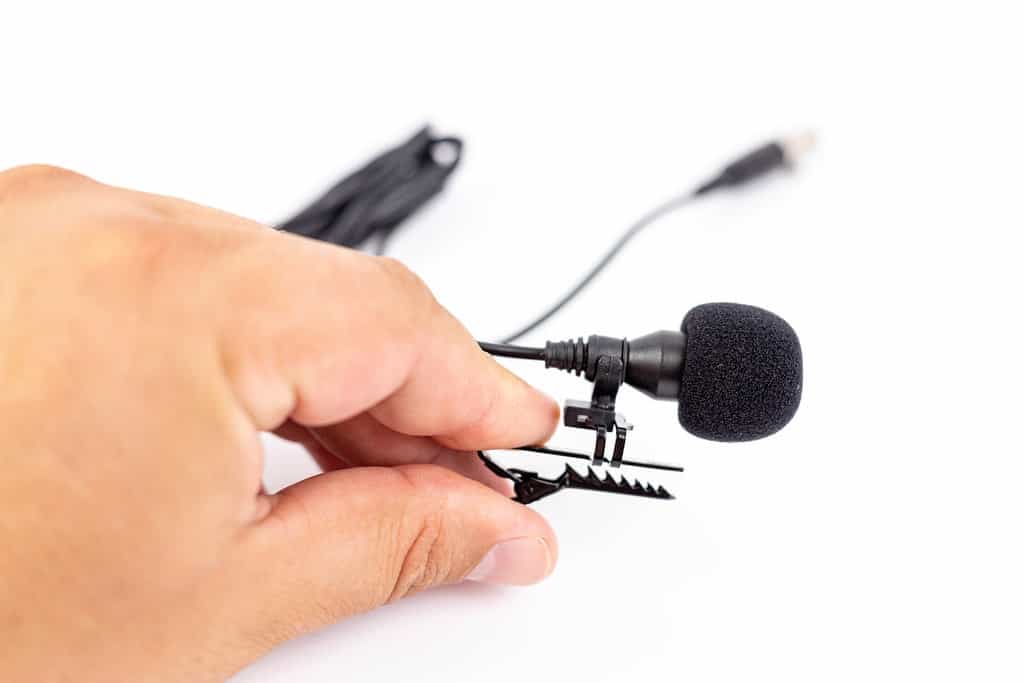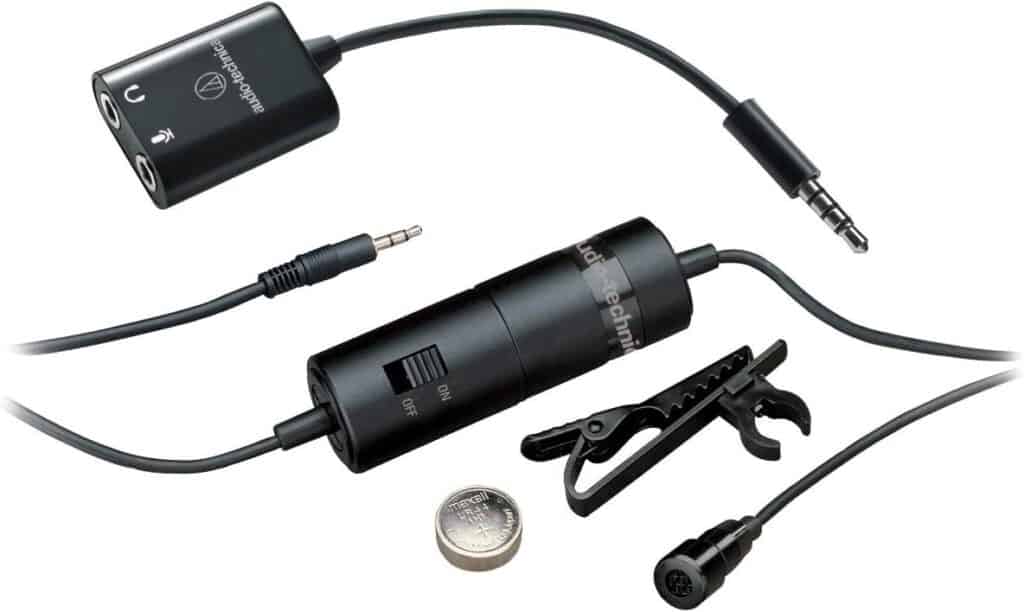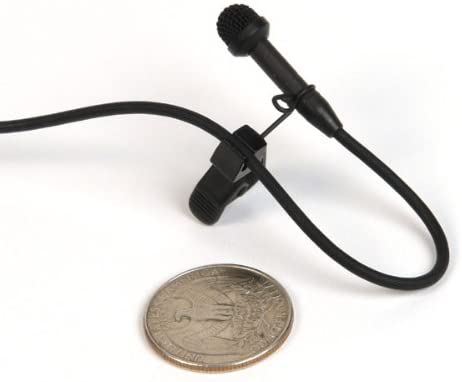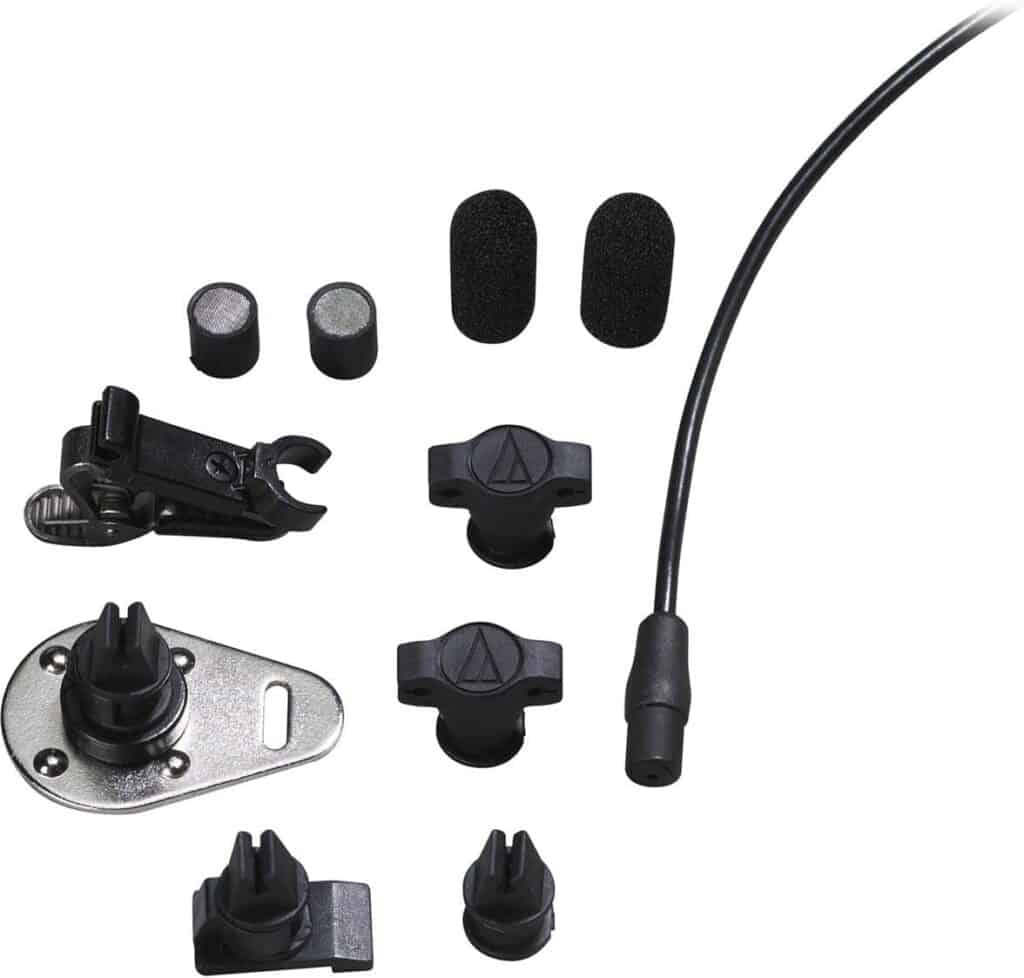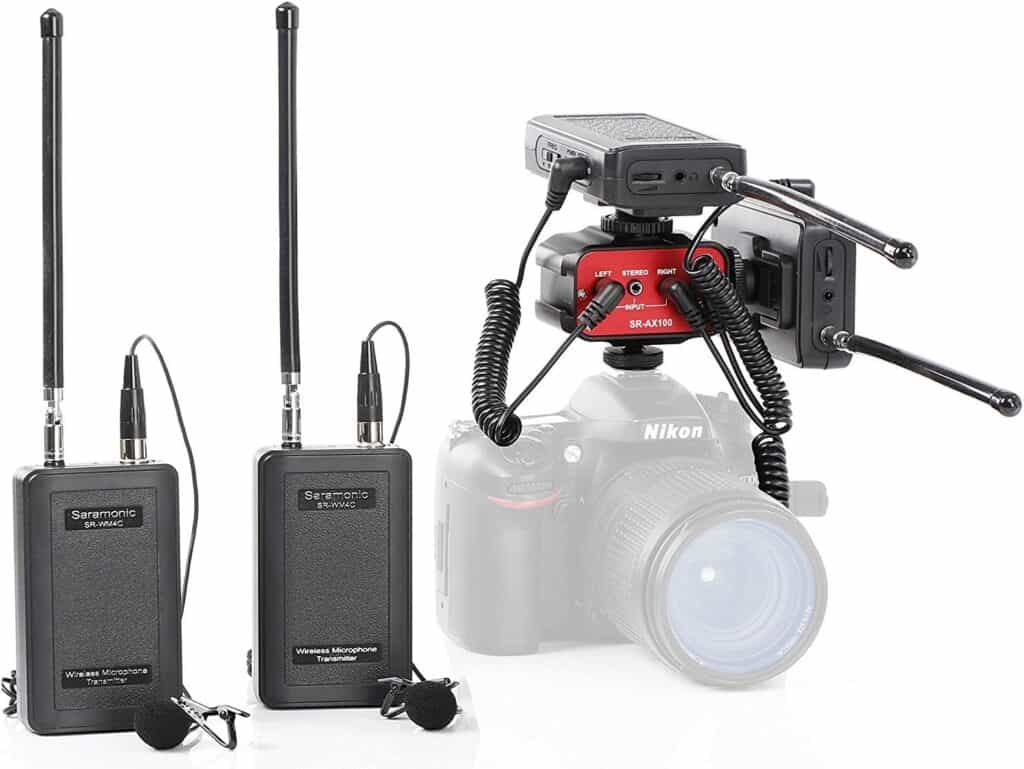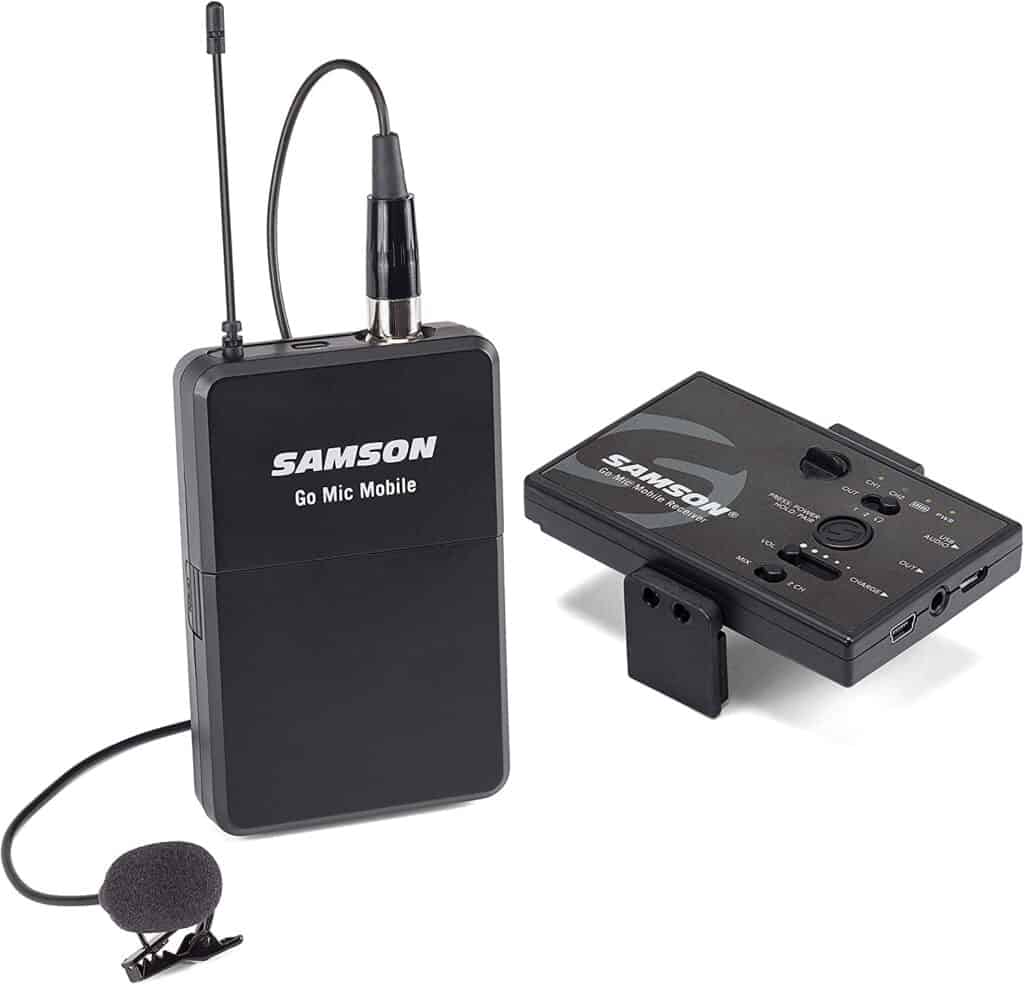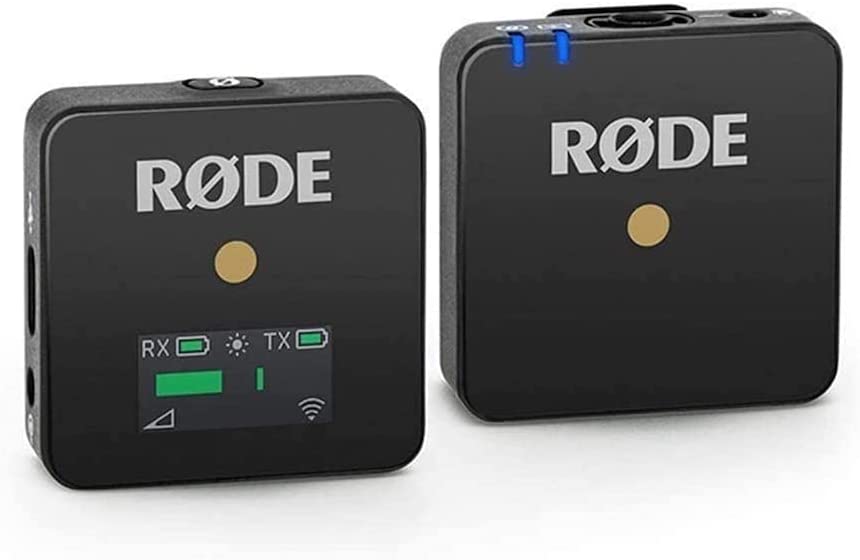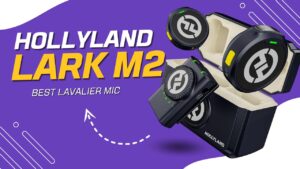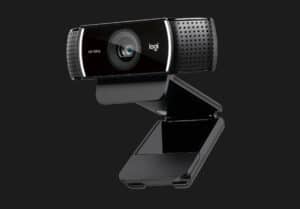Lavalier mics are convenient tools for podcasters and livestreamers who need to record content without holding a microphone. In this article, we highlight some of the best lavalier microphones for podcasting and live streaming, taking into account audio quality, ease of use, and compatibility with different devices.
Castos is a participant in the Amazon Services LLC Associates Program. We may earn commissions from your purchases on Amazon.com, though at no cost to you.
Tip
Not sure what to buy for your podcast? We list everything you need in our comprehensive podcasting equipment guide. We break it down by budget to help you find exactly what you need.
The Best Wired Lavalier Microphones
Here’s our list of the best lavalier microphones that are wired. They offer the best sound quality and power usage, but limit your ability to move around.
1. Rode smartLav+
The Rode smartLav+ is a professional-grade lavalier microphone designed specifically for use with smartphones and tablets. It features a high-quality omnidirectional condenser capsule that captures crisp, clear sound with excellent detail and frequency response.
One of the standout features of the smartLav+ is its compatibility with the Rode Rec app, which allows users to record and edit audio on the go with their mobile device. The app also includes a range of useful features such as EQ controls, compression, and noise reduction, making it an incredibly versatile tool for content creators.
Overall, the Rode smartLav+ is a fantastic option for anyone looking for a high-quality lavalier microphone that’s easy to use and compatible with a wide range of devices. Its impressive sound quality, compatibility with the Rode Rec app, and durable construction make it an excellent investment for podcasters, journalists, and vloggers alike.
2. Shure MVL
The Shure MVL is a compact and affordable lavalier microphone designed for use with smartphones and other mobile devices. It features a condenser microphone element that provides a clear and detailed sound, making it ideal for interviews, podcasts, and other types of content creation.
We love the simple plug-and-play design. There’s no need for additional software or drivers, and it’s compatible with a wide range of devices, including iPhones, Android phones, and tablets. The microphone also comes with a range of accessories, including a windscreen and a clothing clip, which allows for easy and discreet mounting.
While the Shure MVL may not have all the features of more expensive lavalier microphones, its compact size, ease of use, and affordability make it a great option for content creators who need a reliable and high-quality microphone that won’t break the bank.
3. Audio-Technica ATR3350iS
The Audio-Technica ATR3350iS is a popular lavalier microphone that offers excellent sound quality and compatibility with a wide range of devices, including smartphones, cameras, and computers. It features an omnidirectional pickup pattern, which helps to capture sound from all directions, making it ideal for podcasting and other types of content creation.
Additionally, the microphone comes with a range of accessories, including a clip and a windscreen, which helps to reduce background noise and ensure that your recordings sound clear and professional. This is an affordable and versatile microphone that’s perfect for podcasters looking to up their audio quality.
4. Rode Lavalier GO
If you’re looking for a high-quality lavalier microphone to improve the audio quality of your videos or podcasts, the Rode Lavalier GO is a great choice. This small and lightweight mic clips easily onto clothing and features a high-quality omnidirectional condenser capsule that captures clear and natural sound.
It has a frequency response range of 20Hz to 20kHz, making it suitable for a variety of applications. The Lavalier GO is compatible with most recording devices and includes a durable Kevlar reinforced cable that can withstand the rigors of regular use.
5. Giant Squid Audio Lab
The Giant Squid Audio Lab omnidirectional lavalier microphone is a small and discreet microphone that features a high-quality omnidirectional condenser capsule that captures sound from all directions, resulting in a natural and balanced audio recording.
The microphone is compatible with a range of devices, including cameras, smartphones, and audio recorders, and comes with a range of accessories to help ensure a secure and comfortable fit. We love the high-quality construction, reliability, and affordability, making it a popular choice for professionals and amateurs alike.
6. Sanken Cos-11D
The Sanken Cos-11D condenser microphone is a top choice for podcasters and livestreamers due to its natural, open sound and small size that makes it easy to conceal. Its frequency response ranges from 50Hz to 20kHz and the mic’s omnidirectional polar pattern captures clear audio even when not placed perfectly. Additionally, it picks up minimal clothing rustle and is resistant to sweat and moisture.
However, the high quality of the Cos-11D comes at a higher cost than many other lav mics on the market. While it may not be necessary for less demanding applications or those on a tight budget, its superior features make it an excellent investment for professionals who need the highest level of quality in their audio recordings.
7. Audio-Technica AT899 Subminiature
The Audio-Technica AT899 Subminiature is a small and discreet microphone. The mic’s frequency response range of 20Hz-20kHz ensures that it captures a wide range of audio, and its omnidirectional polar pattern picks up sound clearly even when not positioned directly in front of the sound source.
The mic is also resistant to noise interference and comes with a variety of accessories, including a clothing clip and windscreen. It’s important to note, however, that the AT899 does require phantom power in order to operate, so it may not be compatible with all recording equipment.
Tip
Lavalier mic not for you? Check out our guide on the best podcasting microphones or our guide on the best live streaming microphones.
Best Wireless Lavalier Microphones
Now let’s look at the best wireless lavalier microphones. Some of these are designed for DSLR cameras, but they can be used in lots of different ways.
1. Rode RodeLink Filmmaker Kit
The Rode RodeLink Filmmaker Kit provides professional-level audio quality for content creators. It comes with a transmitter, receiver, and a lavalier microphone, all of which work together seamlessly to deliver crisp and clear sound. With a range of up to 100 meters, the RodeLink Filmmaker Kit allows for freedom of movement and is ideal for podcasters who want to record interviews or conversations on the go.
Additionally, the system features a range of advanced settings, including gain adjustment and channel selection, which makes it perfect for anyone who requires a high level of control over their audio recordings.
2. Sennheiser XSW-D Portable Lavalier Set
The Sennheiser XSW-D Portable Lavalier Set includes a bodypack transmitter, a receiver, and a clip-on lavalier microphone. It operates on a 2.4GHz frequency band and features a range of up to 75 meters.
The system is easy to use with automatic frequency management and one-touch synchronization. It also offers real-time monitoring and recording capabilities with a headphone output on the receiver and compatibility with recording apps.
We like the system is compact, portable, and offers five hours of battery use. The kit comes with a bunch of accessories, such as a belt clip, USB charging cable, and storage pouch.
3. Saramonic Dual Wireless Lavalier Microphone Bundle
The Saramonic Dual Wireless Lavalier Microphone Bundle comes with two bodypack transmitters, two clip-on lavalier microphones, and a dual-channel receiver, making it great for podcast teams with two hosts or anyone who interviews guests.
The Saramonic operates on a 2.4GHz frequency band and has a range of up to 50 meters. The system features an easy-to-read LCD display, adjustable volume, and real-time monitoring capabilities with a headphone output on the receiver.
Wireless Lavalier Mics For Smartphones
We don’t recommend recording to your smartphone, but if that’s your podcasting model, here are some lavalier mics designed to work with phones.
1. Samson Go Mic Mobile Lavalier System
The Samson Go Mic Mobile Lavalier System consists of a transmitter, receiver, and a clip-on lavalier microphone. It is designed for use with smartphones and cameras, and features a 2.4GHz frequency band with a range of up to 30 meters. The system also includes a range of accessories and offers real-time monitoring and recording capabilities.
2. Rode Wireless GO
The Rode Wireless GO is a compact wireless microphone system that consists of a transmitter and receiver. The system features a 2.4GHz frequency band, a range of up to 70 meters, and a built-in omnidirectional microphone. It also includes a range of accessories and offers real-time monitoring and recording capabilities.
Tip
A mic isn’t the only piece of gear you need to produce audio content. You also need professional podcasting headphones and a sturdy pop filter. Level up your podcasting game with one of the best audio mixers.
What to Consider Before Buying the Best Lavalier Mics
Thinking of buying one of the best lavalier microphones from this list? Before you make a purchase, consider the following.
Wired vs. wireless microphone
Lavalier mics come wired or wireless. The choice depends on your specific needs and the environment in which they will be used.
Wired lavalier microphones offer reliable and consistent audio quality as there is no risk of signal dropouts or interference. They are also less expensive than wireless microphones and do not require any batteries or charging, making them convenient to use. However, the cable can be limiting in terms of mobility and can be visually distracting or cause problems if it gets tangled or caught on something.
Wireless lavalier microphones offer greater mobility and flexibility compared to wired lavalier microphones. The wearer can move around freely without the restriction of a cable and the range of movement is only limited by the range of the wireless signal. This makes them a good option for performers or presenters who need to move around on stage or in front of a camera.
However, wireless microphones require batteries or charging and are more expensive than wired lavalier microphones. They are also more susceptible to signal dropouts or interference, particularly in environments with a lot of wireless devices or radio frequencies.
Power
Most lavaliers are condenser microphones, which require external power to operate. The power comes from an external device or a battery pack. Before you buy any of the best lavalier microphones on this list, consider how you’ll power it.
Good quality rechargeable batteries are a more sustainable and cost-effective option in the long run, but they come with a higher upfront cost. Some lavaliers can accept 48+ volt phantom power from other equipment, while others can draw power through their 3.5mm jack. Battery packs are also available for use with other devices.
Pickup pattern
Microphones are designed with pick-up or polar patterns, which determine how they capture or reject sound. Lavalier microphones are available in either omnidirectional or cardioid patterns. When purchasing a body mic, it’s important to consider the environment where you’ll be using it the most, and choose the pattern that best suits your needs.
The omnidirectional patterns capture sound evenly from all sides, making it useful when it’s not possible to perfectly position the mic. For instance, an omnidirectional mic attached to someone’s collar can capture sound almost as well as one placed on a lapel or tie.
In contrast, microphones with cardioid patterns are directional, and require careful placement to ensure they’re pointed toward the speaker’s mouth. This might seem like a disadvantage, but because cardioid patterns reject sound from the sides better, these lavaliers work well in noisy environments.
Durability
Lavalier microphones are often subjected to rough handling, as they can get bumped, twisted, and attached to sweaty bodies. The best clip-on mics are built to withstand these conditions and are designed to protect against low levels of moisture. It’s important to choose a durable microphone that can withstand the rigors of daily use and protect against moisture, ensuring reliable performance even in challenging conditions.
Attachments
Lavalier microphones typically come with a range of attachments to suit different use cases and preferences. One common attachment is a clothing clip, which allows the microphone to be securely fastened to clothing, such as a collar, tie, or lapel. Some microphones may also come with a magnetic clip, which can be attached to metal surfaces.
Another type of attachment is a foam windscreen, which helps to reduce wind noise and plosives. Some microphones may also come with a small pop filter, which is a more effective option for reducing plosives.
In addition to clips and windscreens, lavalier microphones may also come with adapters or extension cables to allow them to be used with different types of equipment. Some microphones may also come with a storage case or pouch to protect them during transportation and storage.
Connectors
Lavalier microphones may come with different types of connectors to allow them to be used with a range of recording devices and sound systems. Two common types of connectors are XLR and TRS.
XLR connectors are three-pin connectors that are commonly used with professional audio equipment, such as mixers, amplifiers, and cameras. They provide a balanced signal, which helps to reduce noise and interference. Some lavalier microphones may have an XLR connector built-in, while others may require an adapter to be used with XLR-equipped equipment.
TRS connectors, also known as “mini jacks” or “headphone jacks,” are commonly used with portable recording devices, smartphones, and laptops. They come in two sizes: 1/8 inch (3.5mm) and 1/4 inch (6.3mm). Lavalier microphones may come with a TRS connector built-in, or they may require an adapter to be used with TRS-equipped equipment.
Another type of connector used with lavalier microphones is the TA4F connector. This is a four-pin mini XLR connector that is commonly used with wireless microphone systems, such as those made by Shure, Sennheiser, and Audio-Technica. Some lavalier microphones may come with a TA4F connector built-in, while others may require an adapter to be used with wireless microphone systems.
FAQs About the Best Lavalier Microphones
Here are some common questions people ask about buying or using lavalier microphones.
How do I choose a good lavalier mic?
When selecting a lavalier microphone, consider the intended use, the type of connector required, and the pick-up pattern. Look for a microphone with high-quality sound, low noise, and durability. Ensure that it comes with attachments and accessories such as a windscreen and clothing clip. Additionally, consider the microphone’s frequency response range, sensitivity, and impedance to ensure that it is compatible with your recording equipment.
Do lavalier mics sound good?
Yes, lavalier microphones can sound good when used correctly. The quality of the sound depends on factors such as the microphone’s sensitivity, frequency response, and pick-up pattern, as well as the placement and use of the microphone. Proper placement and use of the microphone can help to minimize noise and interference and produce clear, high-quality audio.
What is the difference between lapel and lavalier mic?
There is no real difference between a lapel mic and a lavalier mic; they are two terms used interchangeably to describe the same type of microphone. Both lapel and lavalier microphones are small, clip-on microphones that can be attached to clothing or other surfaces to capture audio.
How much does a lavalier mic cost?
The cost of a lavalier microphone can vary widely depending on the quality and features of the microphone. Lower-end lavalier microphones can cost as little as $10-20, while higher-end professional-grade microphones can cost several hundred dollars. The cost can also depend on additional features such as noise-canceling capabilities or wireless connectivity.
Do lavalier mics need phantom power?
Not all lavalier microphones require phantom power. Some microphones may require external power, such as a battery, to operate. Other microphones may be designed to accept phantom power, which is a type of power that can be supplied by some recording equipment, such as mixers or preamps.
Check the specifications of the microphone to determine whether it requires phantom power or other external power sources, and to ensure that it is properly powered for optimal performance.
How long does a lavalier mic last?
The lifespan of a lavalier microphone depends on factors such as the quality of the microphone, frequency of use, and care and maintenance practices. High-quality microphones that are well-maintained can last for several years, while lower-quality or poorly-maintained microphones may have a shorter lifespan.
It’s important to store the microphone properly, clean it regularly, and avoid exposing it to extreme temperatures or moisture, which can damage the microphone. With proper care and maintenance, a lavalier microphone can last for many years.
The Best Lavalier Microphones for Your Needs
We’ve given you a list of the best lavalier microphones as well as some considerations to make before you purchase. Ultimately, it’s important to choose the best microphone that suits your needs. Find a piece of equipment you love, care for it, and it will serve you well as you produce amazing content.
Check out these reviews of our favorite pieces of podcasting gear:
What are your thoughts on the best lavalier microphones? Leave your recommendations in the comments.
